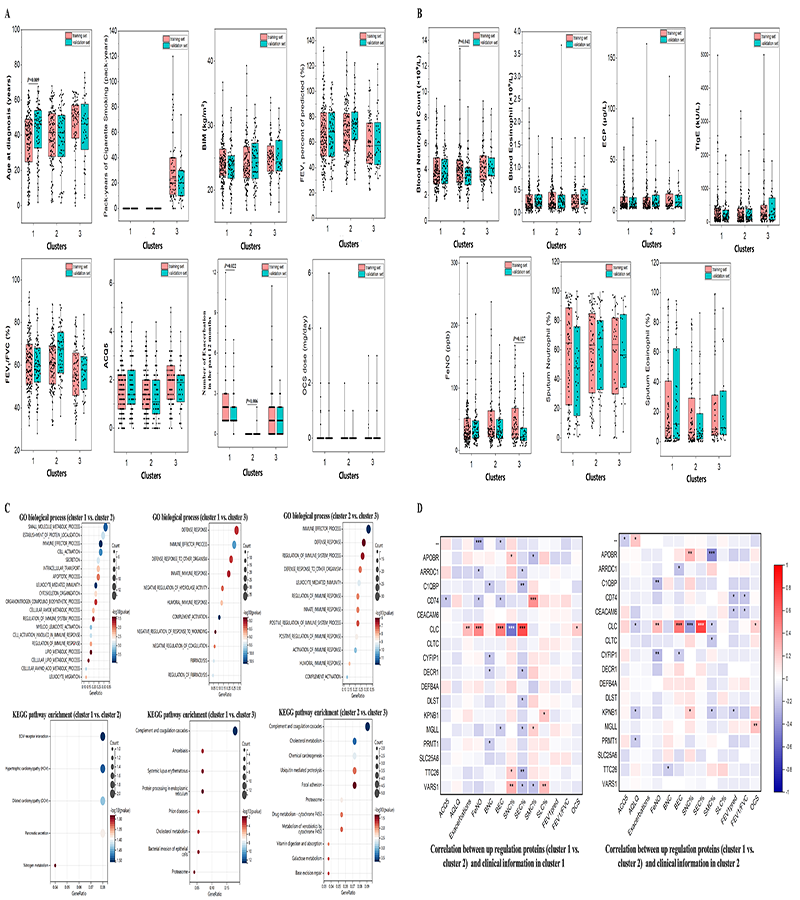Abstract
Background: The phenotypic clusters in a large multicenter cohort of Chinese asthmatics are unclear.
Objectives: To determine the phenotypes of C-BIOPRED cohort using clinic-physiologic parameters and link to sputum proteome.
Methods: Partition-around-medoids clustering was applied to a training set of 362 asthmatics using 8 pre-specified clinico-physiologic variables, with validation determined in a set of 181. Proteome analysis of sputum supernatants was performed in 335 participants using data-dependent acquisition mass spectrometry (DDA-MS).
Results: 3 clusters were obtained. Cluster 1 consisted mainly of non-smoking women with severe asthma, with frequent exacerbations and moderate airflow obstruction; Cluster 3 consists almost entirely of smoking or ex-smoking men with late-onset severe asthma, with severe airflow obstruction and less exacerbations. Cluster 2 was composed of non-smokers with a similar ratio of males to females as Cluster 1, but with slight airflow obstruction and no exacerbations. The proteome analysis revealed that the complement and coagulation cascades were most of the differential expressed proteins (DEPs) between clusters. Galectin 10 was upregulated in cluster 1 compared to cluster 2, and positive correlated to exacerbations (r=0.26, P<0.01), fractional exhaled nitric oxide (FeNO) (r=0.46, P<0.001), blood eosinophil counts (BEC) (r=0.51, P<0.001), sputum eosinophil counts percentage (SEC%) (r=0.70, P<0.001) and OCS dose (r=0.21, P<0.05) in cluster 1.
Conclusion: 3 stable and reproducible clusters differentiated by smoking status, degree of airflow obstruction and exacerbation history were yielded, with differences in complement and coagulation pathways.
